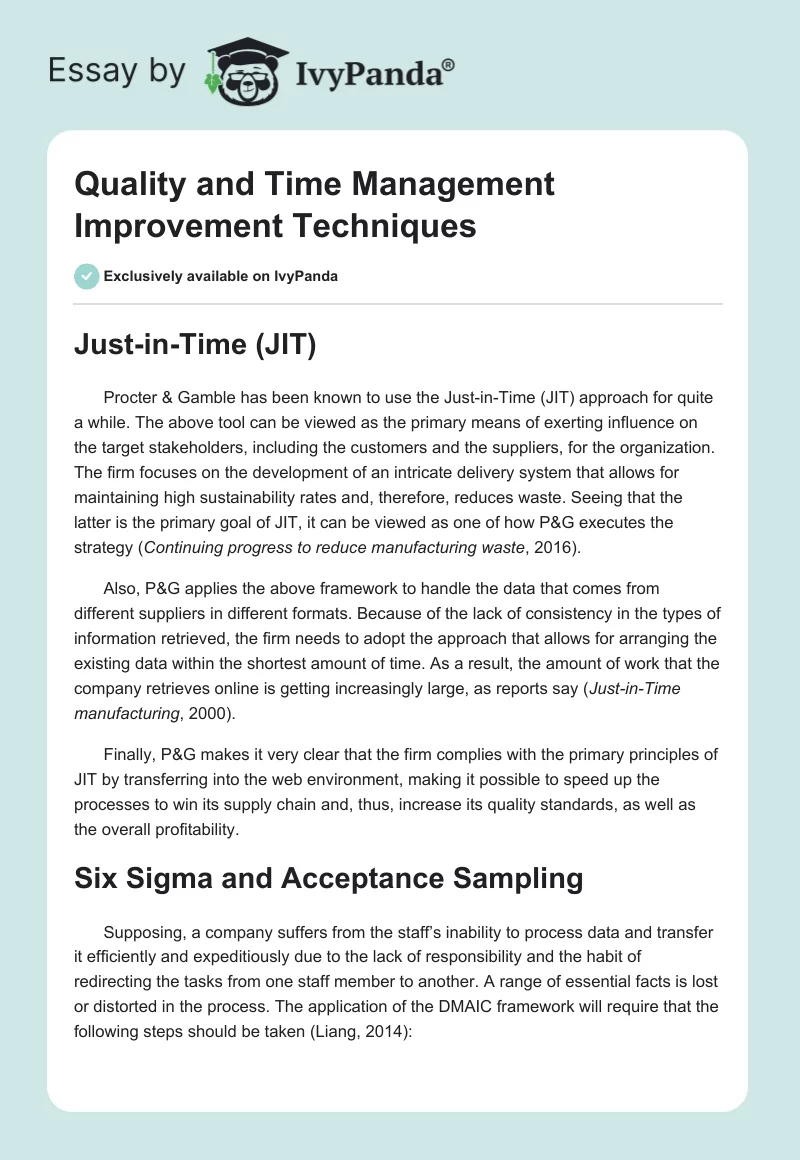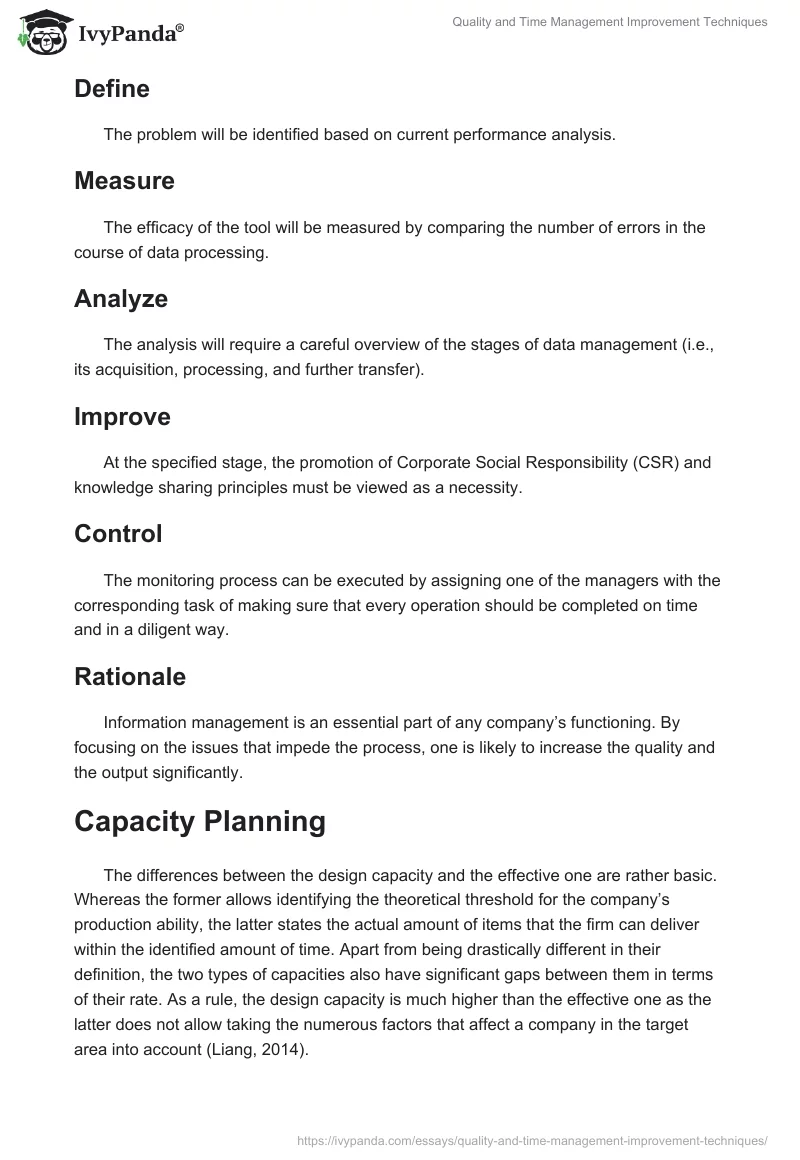Just-in-Time (JIT)
Procter & Gamble has been known to use the Just-in-Time (JIT) approach for quite a while. The above tool can be viewed as the primary means of exerting influence on the target stakeholders, including the customers and the suppliers, for the organization. The firm focuses on the development of an intricate delivery system that allows for maintaining high sustainability rates and, therefore, reduces waste. Seeing that the latter is the primary goal of JIT, it can be viewed as one of how P&G executes the strategy (Continuing progress to reduce manufacturing waste, 2016).
Also, P&G applies the above framework to handle the data that comes from different suppliers in different formats. Because of the lack of consistency in the types of information retrieved, the firm needs to adopt the approach that allows for arranging the existing data within the shortest amount of time. As a result, the amount of work that the company retrieves online is getting increasingly large, as reports say (Just-in-Time manufacturing, 2000).
Finally, P&G makes it very clear that the firm complies with the primary principles of JIT by transferring into the web environment, making it possible to speed up the processes to win its supply chain and, thus, increase its quality standards, as well as the overall profitability.
Six Sigma and Acceptance Sampling
Supposing, a company suffers from the staff’s inability to process data and transfer it efficiently and expeditiously due to the lack of responsibility and the habit of redirecting the tasks from one staff member to another. A range of essential facts is lost or distorted in the process. The application of the DMAIC framework will require that the following steps should be taken (Liang, 2014):
Define
The problem will be identified based on current performance analysis.
Measure
The efficacy of the tool will be measured by comparing the number of errors in the course of data processing.
Analyze
The analysis will require a careful overview of the stages of data management (i.e., its acquisition, processing, and further transfer).
Improve
At the specified stage, the promotion of Corporate Social Responsibility (CSR) and knowledge sharing principles must be viewed as a necessity.
Control
The monitoring process can be executed by assigning one of the managers with the corresponding task of making sure that every operation should be completed on time and in a diligent way.
Rationale
Information management is an essential part of any company’s functioning. By focusing on the issues that impede the process, one is likely to increase the quality and the output significantly.
Capacity Planning
The differences between the design capacity and the effective one are rather basic. Whereas the former allows identifying the theoretical threshold for the company’s production ability, the latter states the actual amount of items that the firm can deliver within the identified amount of time. Apart from being drastically different in their definition, the two types of capacities also have significant gaps between them in terms of their rate. As a rule, the design capacity is much higher than the effective one as the latter does not allow taking the numerous factors that affect a company in the target area into account (Liang, 2014).
Adopting the design capacity principles, one is likely to set disregard the specifics of the market and, therefore, fail to meet the expected output. As a result, losses will ensue. For example, a fur company may decide to produce 1,000,000 coats, yet, after being forced to move to the location with comparatively shorter and milder winters, will suffer losses. The effective capacity, in its turn, will not allow exploring the firm’s opportunities and will force one to focus on the boundaries that the current environment sets. For example, a food company may explore its effective capacity targeting vegetarians and losing an opportunity to offer its products to a wider population range.
Reference List
Continuing progress to reduce manufacturing waste. (2016). Web.
Just-in-Time manufacturing. (2000). Web.
Liang, Q. Q. (2014). Analysis and design of steel and composite structures. New York, NY: CRC Press.


